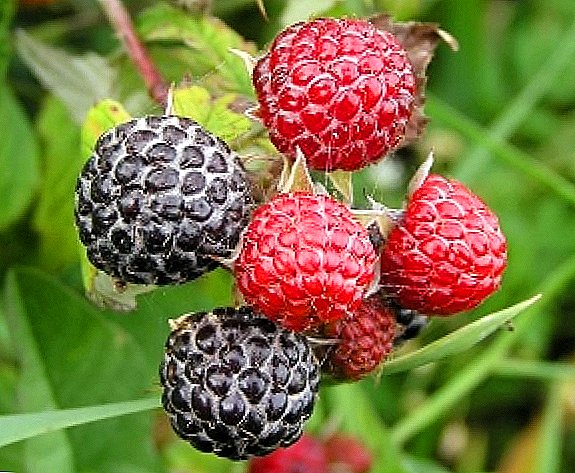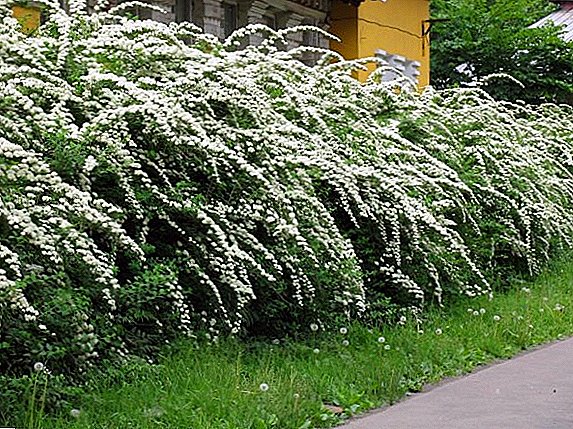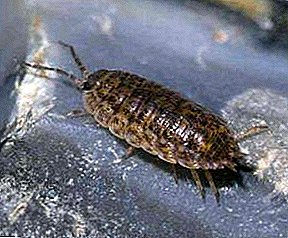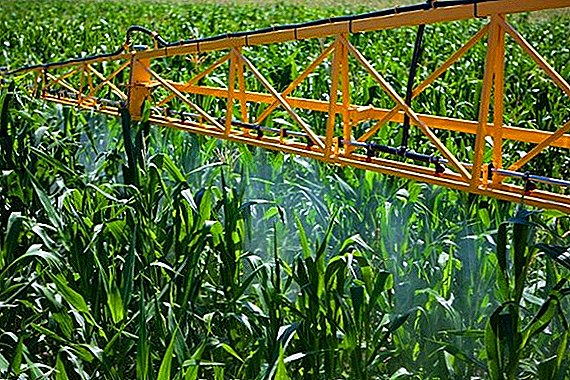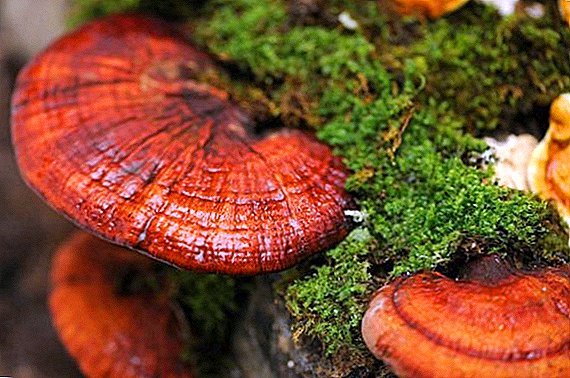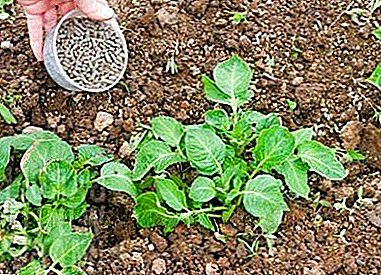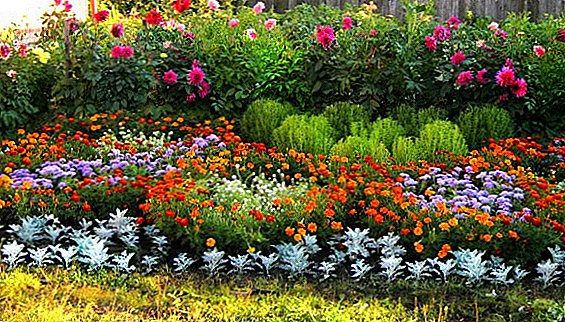 Accustomed to the fact that the flowerbed "burns" with variegated colors in the spring and summer, I want the same in the fall. It is nice when, in addition to the falling yellow leaves, the eyes are warmed with a variety of autumn garden flowers with their bright colors.
Accustomed to the fact that the flowerbed "burns" with variegated colors in the spring and summer, I want the same in the fall. It is nice when, in addition to the falling yellow leaves, the eyes are warmed with a variety of autumn garden flowers with their bright colors.
In order not to be mistaken with the choice and to plant exactly those flowers that will be pleasing to the eye not only in September, October, but even up to the frost, it is necessary to figure out what are the annual autumn and perennial flowers, what are the terms of their flowering.
For the formation of a beautiful flower bed and unusual compositions it is necessary to take into account the height of plants, their color, shape, duration and duration of flowering. Below are the flowers that bloom in the fall and are best suited for your flower garden.
Asters
Asters are annuals, less often perennial flowers. Primary age amaze variety of their varieties. Depending on the type of flowering occurs from early spring to late autumn. Among the single and perennial varieties found blooming in the fall.
The height of the following types of asters: dwarf - height does not exceed 45 cm, short - height reaches 80 cm, tall - up to one and a half meters in height. Asters grow as bushes or separately standing plants.
Flower shoots upright, smooth. The leaves are oblong, serrated. The root system is fibrous. 
Autumn flowerbed, decorated with asters, will allow you to enjoy the colors of summer, even in the cold season. Asters, blooming in the fall, are distinguished by powerful branched stems, large paniculate and umbrella inflorescences.
Aster flowers are formed by inflorescences, which consist of a large number of small flowers (petals). In the center of the inflorescence is the yellow core. Color petals asters varied. They are white, pink, purple, blue, salmon, lilac, red, yellow. Asters can be one- and two-colored.
Did you know? People call asters differently: winter road, Indian summer, frost or star flower.
Phlox
Phlox is a beautiful, bright, lush autumn garden flower. The plant belongs to the perennial, nepokopnym flowers. Flowering plants begins in the summer and continues until frost. The height of single herbaceous or cluster phlox varies from 10 to 150 cm. Shoots are upright, creeping.
Leaves oval or egg-shaped, located at the top of the stem. Flowers of snow, pink, lilac, red, blue, lilac color, with a pleasant fragrant aroma. The shape of flowers is tubular-funnel-shaped with five petals bent at a right angle relative to the tube. 
Petals form a variety of corollas - wheel-shaped, stellate, notched, saucer-like. The diameter of the flower reaches four centimeters, in the center of it there is an eye. The flowers form paniculate or shield flakes of different sizes.
Goldenrod
The following autumn blooming flowers on our list have a wooden taproot. This is a perennial called goldenrod. The shoots are erect plants, densely covered with foliage oval or elliptical.
Plant height varies from 30 cm to one meter. The trunk is green in color, sometimes with shades of red and purple at the bottom. Lamina acuminate, serrated on each side. The whole plant is covered with small, slightly noticeable fibers. 
The color of the small flowers is sunny yellow. Buds are located in baskets, which, in turn, form a narrow erect racemose or paniculate inflorescences. Buds in inflorescences are interspersed with leaves. Flowering period - from May to September inclusive. The advantage of the goldenrod is drought and frost resistance.
Important! Goldenrod is a poisonous plant, it is necessary to work with it in gloves.
Saxifrage
Another flower that blooms in September is the saxifrage. A perennial plant, the name of which in translation from Latin means - breaking rocks. The plant is unpretentious in the care. The root system is fibrous.
Kamnelomki shoots grow from 50 cm to one and a half meters. Leaves of cultivated species of saxifrage can have a simple, pinnate or palmate structure. Leaves can be thick and thin, leathery, dense, spherical or oval. 
Leaf size reaches 6 cm, leaf color varies from emerald to gray with a greenish tint. Small flowers, like bells, are collected in paniculate or racemose inflorescences or are located singly.
The color of the buds can be pure white, pink, yellow, bright crimson or red. If the winters are too cold, the saxifrage grow as annual plants, because when the air temperature is below +6 ºC, the plant slowly dies off.
Did you know? The saxifrage that grows high in the mountains, emit leaf plates of lime. Due to the presence of lime extracted by the plant on the leaf plates, the moisture evaporates from it less.
Helenium autumn
Gelenium autumn refers to annual and perennial plants. This is a herbaceous plant with a specific difference. The helenium root system dies in the fall, together with the shoots, while the underground buds of the annual shoots form new leaf sockets with the root system. The following year, this outlet will throw out a fresh stem.
Helenium is a separately growing upright plant with branches branched at the top. The flower stems grow from 0.75 m to 1.6 m. The leaves are oval or lanceolate. Thyroid inflorescences consist of baskets, which, in turn, are formed by marginal reed and central tubular flowers. 
The color of the extreme reed buds is orange, brown, yellow, red, and the central tubular ones are yellow or brown. Gelenium flowers will be a wonderful decoration for an autumn flower garden. The baskets of golden color, capable of changing color, fascinate with their simplicity. The flowering period - the end of July - the beginning of September.
Chrysanthemums
The most common flowers of late autumn are chrysanthemums. The homeland of this beautiful flower is Japan. The plant is a perennial shrub with thin, woody, upright stems of a green-brown color. Plant height - from 30 cm (dwarf) to 1.5 m (tall).
Leaves sedentary, green-gray color with a specific flavor. Depending on the variety, the inflorescences may be simple, semi-double, double, needle, tubular baskets. The sizes of buds are different: large and small. 
The color of chrysanthemums can be anything, except blue. Such autumn flowers perennials, like chrysanthemums, even have a vegetable form, which is cultivated specifically for use in cooking. Flowering occurs from early September to frost.
Dahlias
Dahlias are perennial herbaceous plants with tuberous roots. To date, the number of varieties of dahlias is about 15 thousand. The homeland of this plant is not precisely defined. Opinions of scientists about the origin of the flower are divided between Mexico, Colombia and Guatemala.
Dahlias are beautiful, colorful autumn perennial flowers for your yard or flower bed. Flower shoots are erect, branched, smooth or rough texture. The height of the shoots can vary in the range of 30-250 cm. The trunk is hollow inside, the base of the plant is woody.
Leaves of flowers are pinnate, oblong, covered with fibers. The color of leaves is emerald or brown-scarlet. The inflorescences consist of baskets of various diameters (3-30 cm), surrounded by pistillate reed flowers, of various shapes (pompon, spherical, cactus-like, pion-like, collar), size and color.
There is no only dahlias blue, black or blue color. The center of the inflorescence is occupied by small bisexual tubular flowers of yellow or brown color. Dahlia blooms from July to frost. Beautiful autumn flowers are presented to your attention in the photo below. 
Important! Although dahlias and perennials, but in the winter they need to cover, because the temperature below zero is deadly for tubers.
Crocus
Crocus belongs to the Iris family. This bulbous plant blooms in spring or autumn. If you are wondering what flowers bloom in September, the answer is simple - these are perennials crocuses. The central stem of the flower is missing.
The leaves are narrow, linear shape, dark green with white stripes in the middle. Flower-shaped bell-funnel. The height of the perianth does not exceed 15 centimeters. It is formed by six petals. Petals are placed in two rows: the outer row - three large petals, the inner row - three slightly smaller petals.
Flowers solitary, have a different color. Blossoming buds are like stars. Flowering occurs within two weeks in September. 
Monards
Homeland Monarda - North America. Science knows about 20 varieties of Monarda. Monarda - is one- or perennial grass. The stem of the plant is straight, branched, grows up to 150 cm. The leaves of the Monarda are oblong-lanceolate, jagged, emerald in color, have a pleasant fragrant smell. It is because of this aroma that the monarda was mistakenly considered as a bergamot for a long time.
Did you know? Spicy herb with a mint-lemon smell is used in cooking and teas.Aromatic two-lipped flowers with a diameter of up to 7 cm form racete-like inflorescences located one above another. Coloring colors can be white, red, yellow, pink, purple, sometimes speckled. Due to its shape, the buds of the Monarda are similar to spiders at a great distance. Monarda blooms from June to September inclusive. Here are some other flowers that not only bloom in autumn, but can also become useful in cooking.

Rudbeckia
Want to know which plant blooms until late autumn, this is rudbeckia. It begins to bloom in July and blooms profusely before the onset of frost. Rudbeckia is from North America. The flower has both perennial and annual varieties.
Among flower growers, a hairy type of rudbeckia is in demand. The height of the villus-covered trunk branching from the ground does not exceed 2 m. The roots are branched. The leaves are oval and stem-shaped, large, shaggy.
One can only imagine what beautiful autumn flowers of rudbeckia are. They look like big daisies painted in yellow, red, orange. The diameter of the flower reaches 15 cm. The core, bordered with petals, consists of tubular petals of yellow-brown or red-black color. 
Tricyrtis
Tricyrtis is a perennial herbaceous flower. The birthplace of this flower is Japan. In the people it is called a garden orchid or a toad lily. The genus Tricyrthis has up to 20 species.
The bush grows from 70 to 90 cm, the stems are erect cylindrical. The root system is located close to the surface, characterized by the ability to recover from damage in the shortest possible time. Large sheets of red or pink dots have an egg-shaped or elongated shape. The shape of the buds is similar to the shape of orchid flowers.
The size of the flowers reaches 4 cm, they are located in the axils of the leaves. Coloring can be cream, white, pink, yellow, lilac, shaded by speckles. Blossoming period - July - the first frost. Autumn flowers tricitris in the garden - truly fascinating and warming the soul of a miracle. 
Important! Due to late flowering, the plant often suffers from frost.
Steward
Steward - This is a flower with erect shoots, whose height reaches two meters. The tops of the trunks end with corymbose inflorescences, with a diameter of up to one quarter of a meter. Large holistic elongated tapered leaves are located along the entire height of the shoots. The color of the foliage is dark green with burgundy veins or purple stains.
The flowers are small sizes of white, purple, cream or pink color. The stevie emit a pleasant aroma during flowering. Among gardeners of our latitudes, stemship purple is very popular. Planting park after a bed is beneficial for long flowering plants. Flowering begins in mid-summer and ends with the arrival of frost. 
Did you know? Grammar purple is widely used in folk medicine for the treatment of wounds, inflammatory processes.
Zinnia (majors)
What flowers grow in autumn better than majors. Saturation of zinnia with bright colors against the background of dying nature opens up a second wind.
Majors are annual high and short erect plants with branched or compact shoots. Stems 30-100 cm tall cover hard pubescence. Leaves of light green or dark green, oval-pointed, covered with hard villi.
The diameter of the inflorescences-baskets reaches 15 cm. The shape of the inflorescences can be terry, semi-double or simple. Tubular yellow convex core is surrounded by reed flowers of different shapes and colors. In majors, like dahlias with chrysanthemums, there is not only a blue and blue color.
Petals may have a yellow, white, pink, orange, purple, lilac, red, burgundy color. Majors bloom in July and bloom until October. A variety of shapes and colors allows you to use zinnia for decorating rabatok, flower beds and alpine slides.

Marigold (Tagetes)
Tagetes are perennial and annual plants of the Aster family. To us the plants came from South and Central America. There are dwarf, medium tall and tall forms of marigolds.
The height of the stems, depending on the variety, varies from 20 to 120 cm. The stalks of Tagetes are branched, leaflets integral or jagged, of emerald color. The velvety petals of the buds are colored yellow, orange, and brown.
Basket inflorescences are: clove-color, spherical, flattened-spherical, hemispherical; simple or double, large (bud diameter 10 cm) or small (bud diameter 2-3 cm). Flowers and stalks of marigolds have a peculiar smell. 
Important! Marigolds are not only beautiful flowers, they also have phytoncidal properties. Tagetes growing near a garden bed can treat plants for fungal diseases.Autumn flowers are presented to your attention: their names, photos and a brief description. What plant to plant in their beds, you decide.



